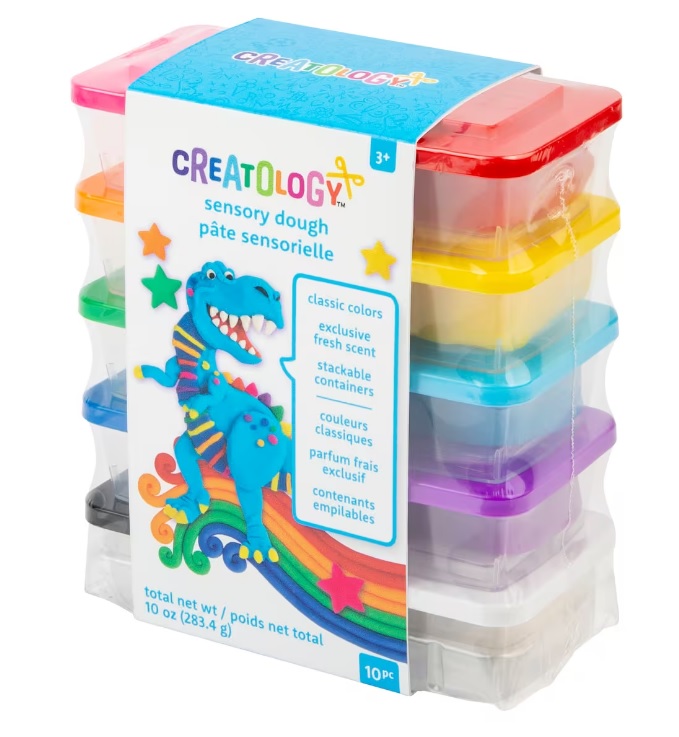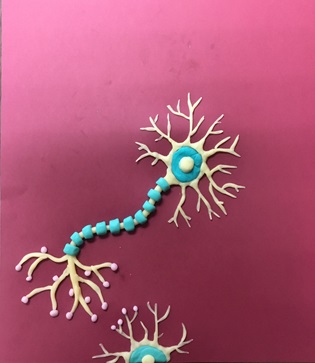My friends in the Facebook group “Teaching Resources for Biological Psychology and Neuroscience” have shared so many exciting resources, but my favorite was the Play-Doh neuron project. Because I’ve been teaching remotely for three (!!!) years now, I never had a chance to do this. Yes, I could have asked the students to do this at home and upload their photos, but that just didn’t seem to be the same.
This quarter, I have my first in-person biopsych course since Spring 2020. Because I have all of my recorded lectures for the online, asynchronous classes I’ve been teaching, I thought I might as well take advantage of that and use some of my very limited quarter system class time to have some fun. The Play-Doh neurons made it to the schedule!
I was somewhat stymied in my efforts by an odd absence of Play-Doh in the places I first looked. My local 99-Cent store seemed like a logical place to find it, but no, they didn’t carry it. I headed next to my local Michael’s, and although they were out of “official” Play-Doh, they did offer their own in-house brand. They had some great card stock on which to build the neuron models, too!

I bought the two sets they had (it was newly arrived), and thought that might not be enough for my 35 students. A handout from Indiana University on Play-Doh neurons had a do-it-yourself recipe for homemade dough, and I thought I should give it a try. If you’re curious, here it is:
1 cup flour
1/3 cup salt
2 tsp cream of tartar
1 tbsp vegetable oil
1 cup water
gel food coloring
You mix all the ingredients except the food coloring in a saucepan. I cooked it over medium heat until it started to get lumpy and dry-ish. Then you add the food coloring. The recipe says to wait 30 minutes, but I skipped that and just turned it out on a plastic breadboard and kneaded it until it was smooth. You put it in airtight containers and refrigerate.
Armed with a roll of paper towels, a container of Clorox wipes, Michael’s “sensory dough,” the card stock package, and my homemade dough, I managed to make it to class. The students were delighted with their creations. They really liked the Michael’s dough, and some took it home for more fun. My husband is eyeing the clever containers the dough is in–perfect for screws and things on the workbench. My homemade dough was chosen last (sad face), but the students who used it (I think they felt sorry for me) said it worked well.
How did the neurons turn out? Here is a photo of one of our favorites:

No, this was not made with my dough, sadly!
I asked the students to upload photos of their neurons to our Canvas course page, and many did so but I didn’t require it. I wanted them to have fun. I did ask if doing the models helped them understand more about neurons, but they said, “no.” Nonetheless, they did say it was stress-reducing, a welcome effect given the difficulty of the neural communication chapter. I’ll do this again.


0 Comments